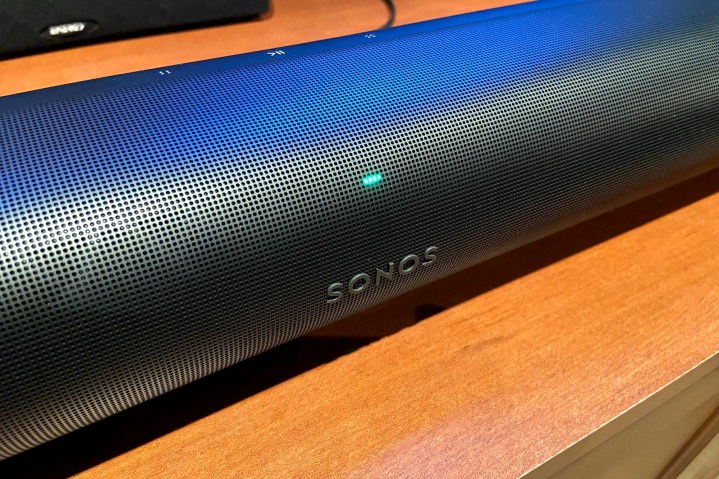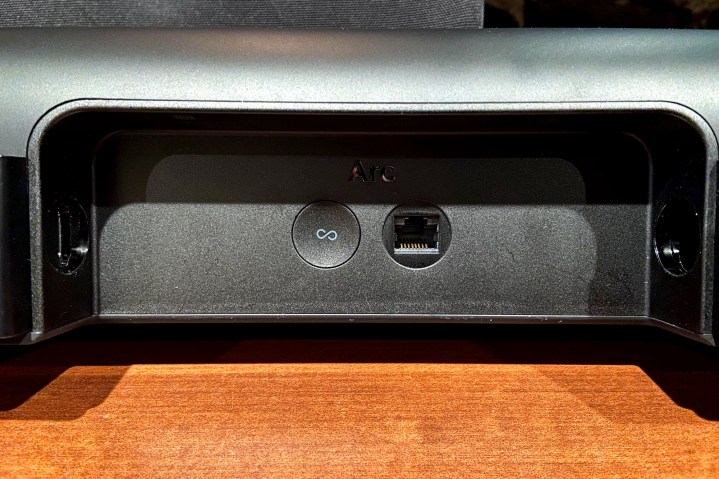Both the Sonos Arc and Sonos Playbar offer intelligent design, great smart features, and impressive cinema sound for any living room or den, but which bar is the better bar of the two? And, if you already own the Playbar, is it worth upgrading to the Arc? The short answer to that question, in our opinion, is yes.
The Sonos Arc is a substantial upgrade from the Playbar in several ways — from speaker design to connection types to Dolby Atmos support, a big signifier of flagship audiophile sound these days.
To make your purchase or upgrade decision easier, we’ve broken down both of Sonos’ premium soundbars below, weighing things such as price, design, and overall sound quality.
Further reading
Price
When the Playbar first debuted, it retailed for $699. Over the nearly eight years the speaker was available in new condition, sales were near-impossible to come by, with package deals for other Sonos speakers being the most common perk offered. But with the Beam hitting shelves in 2018, and now the arrival of the Arc, there has been some movement in Playbar pricing. While you won’t be able to drop into your local Best Buy to grab a new Playbar anymore, you can still find them on Amazon for around $599.
The Sonos Arc has only been available for a little more than a month, but prices are holding steady at $799. Yes, that’s an extra $100 compared to the Playbar launch price, but the Arc is a tad pricier for a few very good reasons.
Some of the most notable advancements include Dolby Atmos support, HDMI integration (introduced with the Beam), Alexa and Google Assistant controls, and improved aesthetics (more on that below). For the purely budget-minded, we’ll give a point to the Playbar for this category. But if you’ve got the extra $200 to spend, the Arc is a much better investment for the long-term.
Winner: Sonos Playbar
Design
In terms of aesthetics, the Arc brings a more modernistic design to the table, compared to the boxier look of the Playbar. At 45 inches long, 3.4 inches tall, and 4.5 inches deep, the Arc is significantly wider than the 35-inch Playbar. One reason for the longer design is to accommodate the Arc’s 11 Class-D powered woofers, versus the Playbar’s nine. The Arc is also available in both black and white matte finishes, and the curved profile looks great when the bar is mounted or sitting tabletop.
While the Playbar is an inch shorter than the Arc when un-mounted, the 3.35 inches jumps to 5.51 inches when up on your wall, which can look a bit strange in certain rooms, particularly above fireplaces. As far as color options go, the Playbar is only available in black (with gray trimmings).

Another small design element that we love about the Arc is the front-facing status LED. The indicator works with both the speakers and voice assistant mics, lighting up when you adjust volume or issue voice commands. The LED itself is ambient-light adaptive, meaning it will automatically raise and lower brightness based on how much light is in your viewing room.
The Playbar uses two status indicators, one for tabletop applications and a second for wall-mounting. Neither is light-adaptive.
Winner: Sonos Arc
Connections
Like the Sonos Beam, the Arc uses an HDMI-ARC connection as its main feed to your TV. For situations where the ARC connection isn’t possible, particularly with older high-def sets, you can use digital optical instead. For those looking to get the most out of the Arc though, it’s the HDMI-ARC signal path that will deliver your Dolby Atmos sound.

Physical Playbar connections are a bit more primitive, with optical-out as the only audio connection to your TV. Both the Arc and Playbar share an Ethernet connection, which at this point is standard for any Sonos gear.
Like the Beam, the Arc is also capable of Airplay 2, a great feature for iOS users that allows you to wirelessly cast music and film/TV audio to your Sonos bar. Once the Arc receives the signal, you can then bounce the audio source to other Sonos speakers on your network. The Playbar does not feature Airplay 2 compatibility, but can still receive and play tunes from the Sonos app.
Winner:Sonos Arc
Voice control
Like the Beam, the Arc rocks onboard support for both Alexa and Google Assistant by way of two far-field mics that do a great job of isolating room noise and zeroing in on your commands. You can use the Arc to fire up your favorite playlist, check the weather, control your smart home equipment, and more. Better yet, if your Arc is connected to your TV via HDMI-ARC, you can give commands like “Alexa, turn on the TV,” and “Okay Google, change the input to HDMI 2.”
While the Playbar doesn’t have Alexa or Google Assistant built in, you can still control it with another Sonos smart speaker, or by adding the bar to your Alexa/Google Assistant’s list of controllable devices.
In this case, however, the convenience of onboard assistance scores the Arc another point.
Winner:Sonos Arc
Sound
For many years, the Playbar was one of the most highly rated cinema soundbars you could buy, and for good reason. With six midrange woofers and three tweeters, the Playbar’s phased design delivers sound effects and soundtracks from the left and right drivers, with the middle woofers handling all the dialogue from your movie or TV show. The result is a dynamic blend of crisp highs and a lively midrange.
In most medium-sized living rooms, just a Playbar by itself is enough to create an all-encompassing surround-sound feeling. For spaces with additional real estate, the bar can also be paired with a Sonos Sub for deeper bass, and a pair of Play:1 or Sonos One speakers to create a total 5.1 surround experience. In our opinion, the Playbar does its best work with at least the additional Sonos Sub added to the mix.

In terms of overall sound quality, Sonos took everything it learned from both the Playbar and Beam, and perfected the tech for the Arc. Right off the bat, the Arc’s two extra drivers make themselves known. That’s 11 drivers total, each powered by a signature Class-D amplifier. The sound is bigger, louder, and richer at even high volumes, where the Playbar (and many other soundbars) would normally experience some kind of breakup.
While both the Arc and Playbar feature Sonos’ speech-enhancement software, the clearer voices really pop with the Arc. And, even without a dedicated subwoofer, the Arc produces deeper lows than the Playbar.
The biggest leg-up that the Arc has over its older brother (and the major reason it wins this category) is its built-in Dolby Atmos support. Where the Playbar features two slightly angled drivers to create a wider soundstage, the Arc uses this same design for its far left and right drivers, in addition to two top-mounted woofers for the 5.0.2 sound that only Atmos can deliver. When watching a film encoded with Atmos, many airborne sound effects, like pouring rain and overhead helicopters, sound like they’re truly coming from above. This authenticity is only further deepened by the Arc’s Trueplay function (iOS device required), which effectively “tunes” the Arc-sound based on room acoustics.
Winner: Sonos Arc
Conclusion
If you’ve got the cash, or find yourself in a position where you can trade your Playbar up, then definitely go with the Arc. While the Playbar still delivers exemplary sound and solid performance, the Arc is the much-refined version of everything the Playbar was. Bigger and bolder sound, better features, sleeker design, and enhanced control options.
If you choose the Playbar, trust us, you’re not choosing wrong. But if you choose the Arc, you’re choosing the best.



